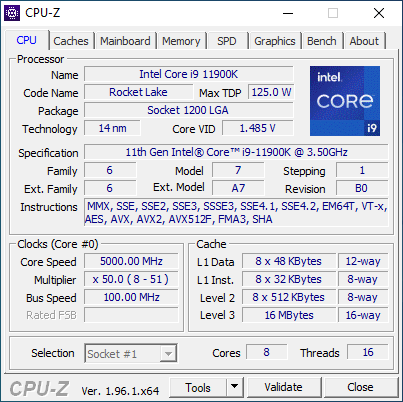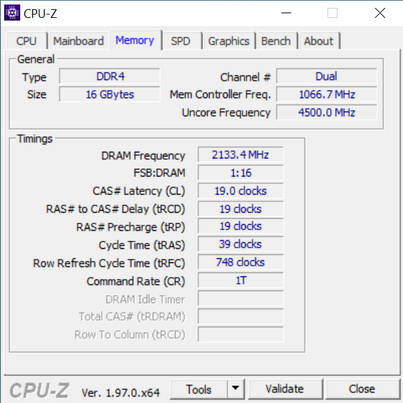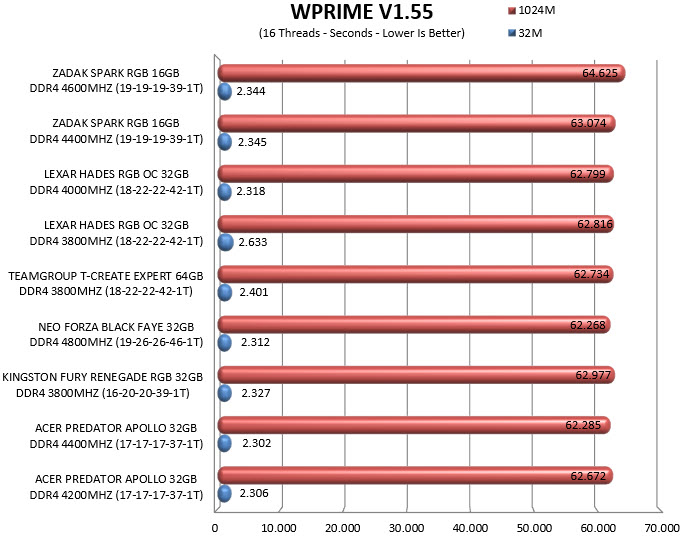INTRODUCTION

After quite a bit of waiting DDR5 is finally here and even though Intel has already released their Z690 compatible chipset (and their partners are already shipping motherboards - i imagine AMD is not far behind) i don't think DDR4 is really threatened by it, at least not right now. As a matter of fact, the first DDR5 modules feature frequencies attainable (and in some cases even surpassed) by DDR4 so for casual users, gamers and even enthusiasts the transition to DDR5 compatible systems is clearly something that can wait (at least until higher speed modules get released). ZADAK may not be the very first brand name to come in mind when it comes to RAM products but they have released several award winning and quite popular DDR4 kits over the course of the last 3-4 years and today with me i have their top of the line one, the dual-channel SPARK RGB 16GB 4266MHz.
ZADAK is a high-end custom water-cooled PC brand founded by a group of people of designers, modders, and engineers in the autumn of 2015. Original design, craftsmanship, and beyond the boundary are the core values of ZADAK. We want to create a custom water-cooled computer & case which is sophisticated and elegant, just like an artwork, an enjoyment. We also want to create something that is easy for you to assemble your own fantasy PC. After years of development, tons of experiments and prototypes, ZADAK finally settles on a design that would be the key of why we are able to make the water-cooled computer so compact. ZADAK hopes that you will get as much fun out of building your own fantasy PC as we do.
The SPARK RGB line of DDR4 RAM modules by ZADAK currently includes single (8/16GB) and dual (2x8GB/2x16GB) kits at 2666/3000/3200/3600/4133/4266MHz frequencies, timings as low as CL16 (2666/3000/3200MHz CL16, 3600MHz CL18, 4133/4266MHz CL19) and voltages ranging from 1.2V (2666MHz) to 1.35V (3000/3200/3600MHz) and 1.4V (4133/4266MHz). As for what's inside the anodized aluminum heatspreaders well aside the 5 ARGB LEDs (compatible with all the leading motherboard sync technologies) always according to the popular Thaiphoon burner software the 4266MHz 1.4V 16GB kit which is here with me today is also based on single rank, single die 8GB modules by Samsung (probably B-Die) and is XMP 2.0 certified with timings set at 19-19-19-39-81. Last but not least ZADAK covers their entire SPARK RGB line of DDR4 modules and kits with a rather generous limited lifetime warranty. So, let’s see what the current flagship DDR4 kit in the ZADAK lineup has to offer.
SPECIFICATIONS AND FEATURES

PACKAGING AND CONTENTS
A partial product picture takes most of the front of the box.
Some words about ZADAK are printed at the rear in 6 languages right next to two 2D barcodes.
Just the 2 SPARK RGB modules are placed inside the box.
THE SPARK RGB 16GB DDR4 4266MHZ CL19
For the SPARK RGB line of DDR4 modules ZADAK has used black and silver anodized aluminum heatspreaders.
The sticker with the specifications of the kit is placed at the rear of both modules.
At the top of each module ZADAK has placed a total of 5 ARGB LEDs compatible with ASUS Aura Sync, MSI Mystic Light Sync, GIGABYTE FUSION RGB 2.0, Razer Chroma RGB and ASRock Polychrome Sync.
Measuring 49.7mm in height the heatspreaders used with the SPARK RGB are quite tall (here you can also see the Neo Forza Faye and the Teamgroup T-Create Expert).
The SPARK RGB may have very tall heatspreaders (so you need to double check for clearance issues with coolers) but they do look very nice.
TEST BED


TESTING METHODOLOGY

Thanks to XMP (2.0) profiles the only thing one needs to do in order to run this RAM kit at its advertised frequency, timings and voltages is to choose/enable it from within the Bios and reboot. That being said if you're into overclocking you may not wish to use the main XMP profile but instead to choose your very own frequency, timings and voltages to achieve even higher performance numbers and that's exactly what we'll also be doing during our DDR4 tests. To be more specific aside testing each kit with its XMP profile we will also be upping the voltages (up to 1.4V max – even though most kits can function at higher voltages I don’t recommend doing so / RAM modules that use 1.4V-145V will be tested up to 1.5V and kits that run with 1.5V up to 1.55V) and frequencies (200MHZ increments) until i find the maximum achievable stable frequency. I also thought about upping voltages and reducing timings instead of increasing the frequency of the modules as high as it can go (always stable and without going over 1.4V) but the end results are pretty much identical.
As for the how I'll be testing each DDR4 Quad/Dual-Kit to arrive in the lab well there aren't that many benchmark programs that only test RAM (or at least RAM and CPU without anything else coming into play) but I’ve got most of them and so you will be seeing results from following benchmarking programs, AIDA64 Engineer Edition, Cinebench Release 20, MaxMemm2 (because we are getting low performance numbers this doesn't seem to play well with our test rig - probably because of the X299 architecture - but we decided to include it regardless), Passmark Performance Test 9, Sisoftware Sandra Titanium and WPrime v1.55. All tests are performed on a fresh Windows 10 Pro installation (complete with all updates until the day of this review) and are repeated a total of 6 times after which the average numbers get recorded into the charts.
* In addition to Quad-Channel tests since March 2020 I’ll also be using the brand new I9-9900K+Z390 DARK test rig (check above) for Dual-Channel RAM tests.
** Since May 2020 three game benchmarks (Assassin’s Creed Odyssey, GEARS 5 and Metro Exodus tested on the X299 system at 1080p resolution and with the ASUS ROG RTX2060 OC set at Gaming Mode) have also been added in the charts.
*** In September 2021 i replaced the Intel I9-9900K+Z390 DARK test rig for a brand new Intel I9-11900K+Z590 DARK one (you can access all the Z390 DARK based tests here).
TEST RESULTS - XMP PROFILE / DUAL CHANNEL







TEST RESULTS - OVERCLOCK / DUAL CHANNEL


Pushing this kit to 4400MHz (1.41V) and 4600MHz (1.43V) was easy to do but anything over that was a no go, not with up to 1.45V (and even with these kits 1.45V is all I am willing to go for 24/7 use).






CONCLUSION

ZADAK is a brand name I’ve wanted to check out for quite a few years now so when they finally started shipping samples roughly a month ago, I was very eager to see just how well they’d perform and as you can see from the charts the SPARK RGB 16GB DDR4 4266MHz CL19 kit doesn’t disappoint. Even at stock speed it performs extremely well but if you want more you can easily take it up to 4600MHz, as long as your motherboard supports such frequencies of course. Performance is not all these modules are great at, they are also some of the best looking ones I’ve used/tested to date. Yes, the heatspreaders are somewhat taller than expected but there are many RGB/ARGB modules which are just as tall so that’s not really an issue (just remember to check for possible clearance issues prior to purchasing them).
The SPARK RGB 16GB DDR4 4266MHz CL19 dual-channel kit is the latest and fastest in the entire ZADAK lineup and that unfortunately means that availability is limited at best. As a matter of fact, I was unable to find this kit for sale online anywhere in both the EU and the USA so I really can’t comment about price. Needless to say, I will circle back when it does get available and update this review but for now price will not be taken into account. Everything else however is and so thanks to its near excellent performance, build quality and looks the SPARK RGB kit clearly deserves the Golden Award.

PROS
- Build Quality
- Looks (Heatspreaders / 5 Zone ARGB)
- Very Good Performance (Up To 4600MHz CL19)
- Limited Lifetime Warranty
- Available Kit Frequencies (2666MHz-4266MHz)
CONS
- Current Availability

 O-Sense
O-Sense

















.png)

